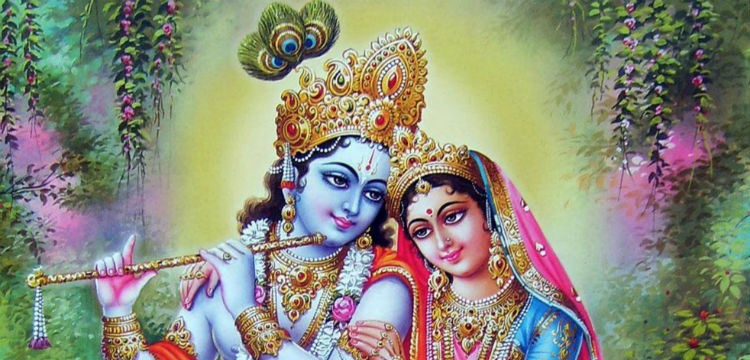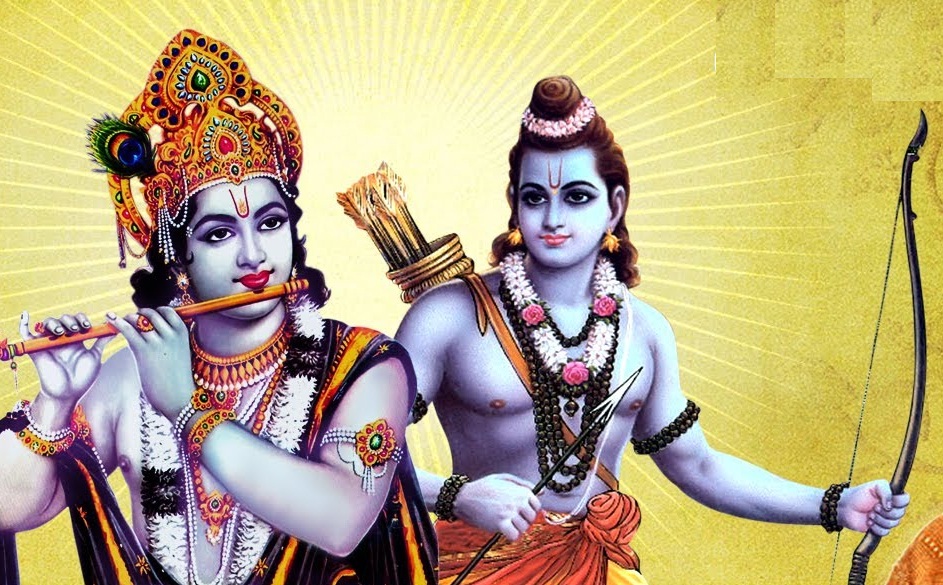Raghavayadhaveeyam (Raghava-Yadaviyam) written by 17th Century poet, Sri Venkatadhvari, is truly a magnificent work in Sanskrit language!
Sri Venkatadhvari was born at Arasanipalai near Kancheepuram and was a follower of Sri Vedanta Desikan (also known as, Swami Desika, Swami Vedanta Desika, Thoopul Nigamaantha Desikan) who was a Guru and a philosopher of Sri Vaishnavism.
I chanced upon this poem, Raghavayadhaveeyam, recently and have been fascinated about it since then! The brilliance of this poem is that, Raghavayadhaveeyam is written as an “anuloma-viloma-kavya”, meaning, a poem with two meanings! The poem in its primary order narrates the story of Lord Rama from the Ramayana while in its reverse order, it narrates the story of Lord Krishna from the Mahabharata, thus covering two of the most famous epics of Sanatana Dharma!
Sri Venkatadhvari is believed to have composed 14 works, of which, the most important one was Lakshmisahasram. It is believed that, the poet was blind and got back his eyesight while composing Laskhmisahasram!
There are 30 slokas in Raghavayadhaveeyam and all of that is written as “anuloma-viloma” method. Here in this article, let us look at some of the slokas and see how beautiful Sanksrit language is and how brilliant our ancient poets are!!
This translation and commentary is taken from the book written by Dr.Saroja Ramanujam, who is a Shiromani in Sanksrit and has done extensive research in Advaita Vedanta!
Before we proceed, my pranams to Sri Venkatadhvari and to Dr. Saroja Ramanujam for beautifully translating this for all of us..!
Raghavayadhaveeyam / Raghava-Yadaviyam by Sri Venkatadhvari
The name, Raghava (Raghuvamsha) refers to the One who is the descendent of Raghu Kula who is none other than Lord Rama. Yadava (Yaduvamsha) is the descendent of Yadu Kula which is Lord Krishna. Thus the name Raghava-Yadhaveeyam.
Let us now look at some slokas from the poem:
This Sloka is in Primary order (anuloma):
कामभारस्स्थलसारश्रीसौधा आसौ घन्वापिका ।
सारसारवपीना सरगाकारसुभूरिभू:॥
Transliteration:
kaamabhaarassthalasaarashreesaudhaa asau ghanvaapikaa|
saarasaaravapeenaa saraagaakaarasubhuribhu:||
Meaning in primary order (anuloma):
“The city of Ayodhya, abounding in mansions, the abodes of riches and splendour and of people, whose desires are fulfilled. is the land of deep wells and the cooing of saarasa birds and of red coloured earth or of red gold.”
The same sloka in the reverse order / pratiloma:
भूरिभूसुरकागारासना पेवरसारसा।
का अपि व अनघसौध असौ श्रेरसालस्थभामका॥
Transliteration:
bhUribhUsurakaagaaraasanaa peevarasaarasaa|
kaa api va anaghasaudha asau shreerasaalasthabhaamakaa||
Meaning in reverse order (pratiloma):
“The houses of Dvaraka are having raised platforms for doing rituals and hence full of brahmins [learned people, not the caste that we know!]. The lotuses blossoming there are large. The city has mansions without blemishes and it shines with mango trees on the top of which the sun was visible.”

Here is another sloka in anuloma:
रामनामा सदा खेदभावे दयावान् अतापीनतेजाः रिपौ आनते।
कादिमोदासहाता स्वभासा रसामे सुगः रेणुकागात्रजे भूरुमे॥
Transliteration:
raamanaama sadaa khedabhaave dayaavaan ataapeenatejaah ripau aanate|
kaadimodaasahataa svabhaasaa rasame sugah renukaagaatraje bhurume ||
Meaning in the primary order (anuloma):
“Shri Rama, who was always merciful towards aggrieved, who shined like the Sun but was easily approachable and who destroyed the demons tormenting the sages became cool in his luminescence when the inimical Parasurama, the son of Renuka, who had all the earth as his wealth and roamed around it, became humble.”
The same sloka in the reverse order (prathiloma):
मेरुभूजेत्रगा काणुरे गोसुमे सा अरसा भास्वता हा सदा मोदिका।
तेन वा पारिजातेन पीता नवा यादवे अभात् अखेदा समानामर ॥
Transliteration:
merubhUjetragaa kaanure gosume saa arasaa bhaasvataa ha sadaa modikaa|
tena vaa paarijatena peetaa navaa yaadave abhaat akhedaa samaanamara||
Meaning in the reverse order (prathiloma):
“Rukmini, became distasteful of all flowers on earth which have very little smell, having obtained the parijatha flower while being in Raivathaka mountain that vanquished even the Meru. She looked as though she acquired a new body, with the lustre of the flower, shining white, with Krishna, resembling a divine being, free of sorrow and always pleasing.”
Let’s look at another sloka in Anuloma / Primary order:
सागस भरताय इभामाभाता मन्युमत्ताया ।
स अत्र मध्यमय तापे पोताय अधिगता रसा ॥
Transliteration:
saagasaa bharataaya ibhamaabhaata manyumattayaa |
sa atra madhyamaya taape potaaya adhigataa rasaa ||
Meaning in the primary order (anuloma):
“The land in Ayodhya, shining with the glory of kingdom, was obtained by the middle one (meaning, the middle wife, that is Kaikeyi), who was burning and mad with anger, for the sake of her son Bharatha by sinful means.”
The same sloka in the reverse order (prathiloma):
सारतागधिया तापोपेता या मध्यमत्रसा ।
यात्तामन्युमता भामा भयेता रभसागसा ॥
Transliteration:
saarataagadhiyaa taapopetaa ya madhyamatrasaa|
yaattaamanyumataa bhaamaa bhayetaa rabhasagasaa||
Meaning in the primary order (prathiloma):
“The slender waisted Sathyabhama, who had the best intellect, became possessed with anger and fear quickly without discrimination at the wrong done to her in haste by Krishna by giving the parijatha flower to Rukmini.”
How beautiful is Sanksrit and the intelligence of the poet, isn’t it? Here is a copy of the book if you would like to read further.
(NOTE: My intention is to share this knowledge and not to breach any copyrights owned by anyone. If sharing this book violates any copyrights, please do drop me a message and I will happily oblige! 🙂 )

